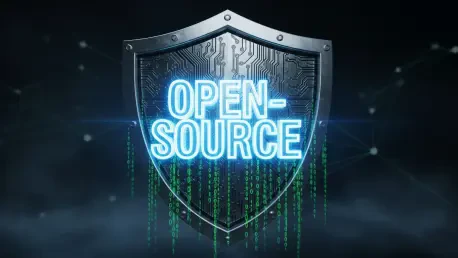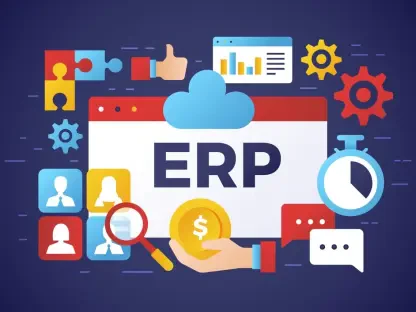In today’s rapidly evolving tech landscape, understanding the implications of new regulations like the European Union’s Cyber Resilience Act (CRA) is crucial for developers and companies alike. I’m thrilled to sit down with Vijay Raina, a seasoned expert in enterprise SaaS technology and software design, whose thought leadership in architecture and tools offers invaluable insights. Our conversation delves into the essence of the CRA, its far-reaching impact on cybersecurity standards, the responsibilities it places on various stakeholders—especially in the open source community—and how it might shape the future of software development globally.
Can you break down what the EU’s Cyber Resilience Act (CRA) is and why it’s such a big deal for the tech world?
Absolutely. The CRA is a comprehensive regulation from the European Union aimed at setting a unified cybersecurity standard for digital products—think hardware, software, and connected devices—that are sold or used within the EU. It’s a big deal because it’s not just about slapping on some security patches; it mandates that security be baked into the design and maintained throughout a product’s lifecycle, from creation to decommissioning. This is a game-changer for ensuring safer tech across the board, holding manufacturers, importers, and distributors accountable for vulnerabilities and updates in a way we haven’t seen before.
How does the CRA affect developers or companies who aren’t even based in the EU?
The reach of the CRA is global, and that’s what catches many off guard. If your software or product ends up in the EU market—whether directly or as part of a larger supply chain—you’re under its jurisdiction. It doesn’t matter if you’ve never set foot in Europe; if your code is embedded in a device sold there, you’re tied to these regulations. Other regions are also starting to mirror these standards, so ignoring the CRA could mean falling behind on a worldwide scale.
In what ways is the CRA looking to strengthen cybersecurity for digital products in the EU?
The CRA tackles cybersecurity head-on by enforcing principles like secure-by-design, meaning products must be built with security as a core component from the get-go. It also requires regular updates to patch vulnerabilities, transparency through things like Software Bills of Materials (SBOMs), and secure default settings. The goal is to close gaps that have long plagued digital products—think outdated software or hidden weaknesses—and make it easier for users to trust and secure what they’re using.
Could you walk us through the timeline for when the CRA’s rules will really start to take effect?
Sure. The CRA officially came into force on December 10, 2024, but that’s just the starting point. The major obligations—where companies and developers need to be fully compliant—kick in on December 11, 2027. Between now and then, the European Commission is ironing out the finer details through delegated acts and expert groups. So, while there’s time to prepare, the clock is ticking, and we’ll see increasing urgency as that 2027 date approaches.
Who are the key players impacted by the CRA, and how do their roles and obligations differ?
The CRA identifies three main groups with distinct responsibilities. First, manufacturers—those who develop or place digital products on the EU market—bear the heaviest load. They’re on the hook for full lifecycle security, managing SBOMs, and fixing vulnerabilities. Then you’ve got stewards, like open source foundations, who have lighter duties focused on setting cybersecurity policies and handling vulnerability disclosures. Lastly, non-commercial developers, such as individual contributors to open source not meant for commercial use, are mostly exempt, though there’s still some gray area that needs clarification.
For individual open source developers, should they be concerned about the CRA if their work isn’t tied to commercial products?
Generally, no. If you’re a hobbyist or contributing to open source without a commercial angle, the CRA isn’t targeting you. It’s designed to focus on products in the EU market, so non-commercial work is out of scope. That said, there’s still some uncertainty in the community about where the lines are drawn, and if your code somehow ends up in a commercial product, the landscape changes. So, staying informed is key, even if direct responsibility isn’t on you.
What specific responsibilities do open source stewards, like major foundations, have under the CRA?
Stewards, such as organizations maintaining open source projects with commercial potential, have a manageable set of obligations. They need to provide a contact point for reporting security issues, disclose when those issues are fixed, and report any security problems with their own infrastructure. It’s pretty straightforward—nothing overly burdensome—and it’s more about fostering best practices and transparency within their communities than taking on heavy compliance tasks.
How might the CRA influence the daily work of open source project maintainers?
For maintainers, the CRA could mean a shift in how they handle security reporting and communication, especially if their project is used commercially in the EU. They might need to formalize processes for receiving and addressing vulnerability reports or ensure there’s a clear point of contact. It’s not a complete overhaul, but it adds a layer of accountability. The bigger challenge might come from manufacturers trying to offload their compliance burdens onto maintainers, which could disrupt workflows if not handled firmly.
You’ve suggested that the CRA could actually be a positive for open source—can you elaborate on why?
Definitely. While the CRA brings new rules, it’s not inherently negative for open source. It pushes for greater transparency and security practices that many in the community already champion. By raising the bar for cybersecurity, it encourages better habits—like documenting dependencies and addressing vulnerabilities promptly—which benefits everyone. Plus, it puts the onus on commercial entities to step up, potentially leading to more resources or support flowing back to open source projects if done right.
What’s your perspective on manufacturers attempting to shift compliance responsibilities onto open source maintainers?
It’s a concerning trend. Manufacturers are the ones primarily responsible under the CRA, but some are trying to push their workload onto open source maintainers, asking them to handle compliance tasks that aren’t their duty. This isn’t just unfair—it’s a misinterpretation of the regulation. Maintainers need to stand their ground and make it clear that their role is limited, especially since they often lack the resources or legal backing to take on such burdens.
How should open source communities prepare for potential pressure from companies as CRA deadlines get closer?
Preparation is about setting boundaries early. Communities should educate themselves on their actual obligations under the CRA—knowing they’re not responsible for manufacturers’ tasks. Having a clear, unified response, maybe even a template letter, to push back on unreasonable demands can be powerful. Also, leaning on resources from groups like the Open Source Security Foundation can help with guidance and tools to navigate this space without getting overwhelmed.
What is your forecast for the impact of the CRA on open source communities over the next few years?
I think we’ll see a mixed bag. In the short term, as deadlines loom—especially around late 2027—there’ll likely be tension as companies scramble to comply and might lean too hard on open source communities for help. But long-term, I’m optimistic. The CRA could drive more funding and support to open source projects as companies realize they need to invest in security upstream. It might also standardize best practices globally, making open source even more robust and trusted. The key will be how well the community holds its ground against misplaced demands in the interim.









